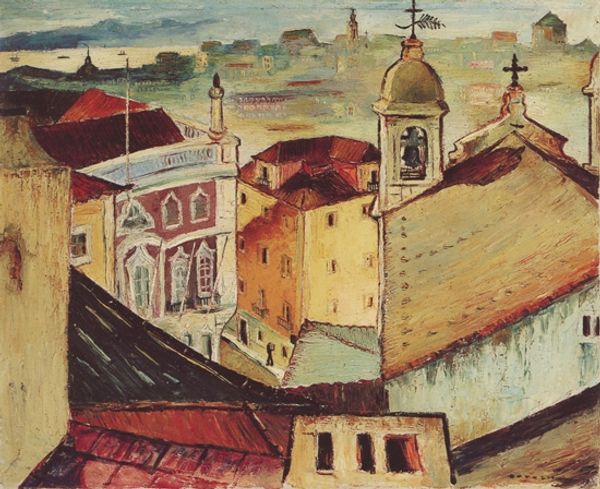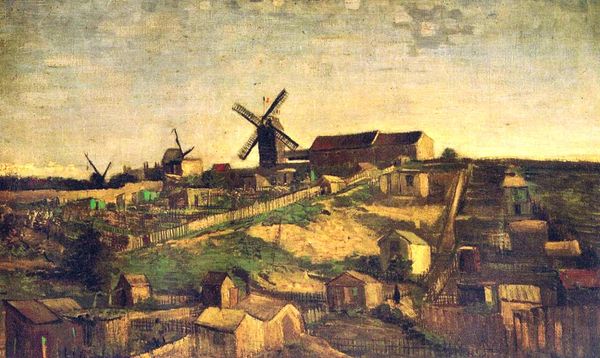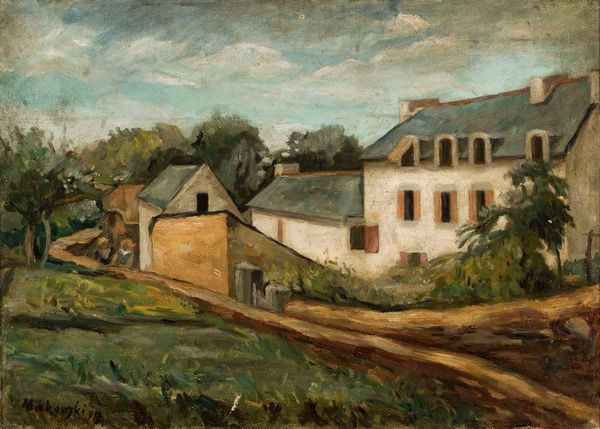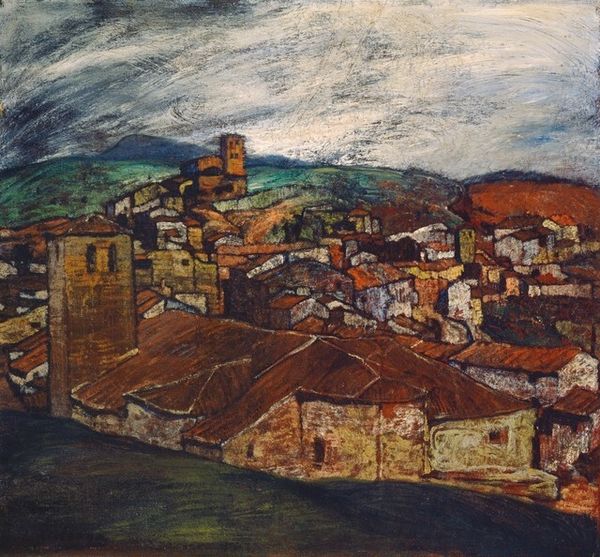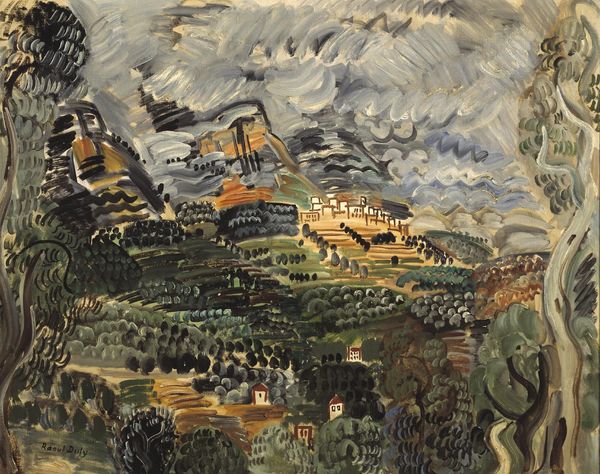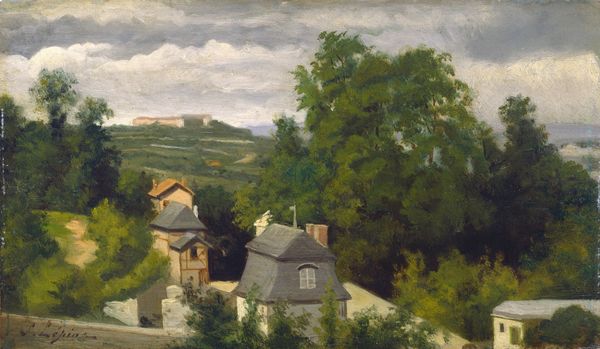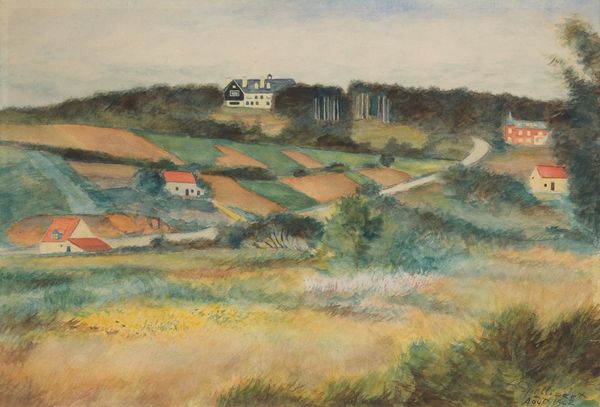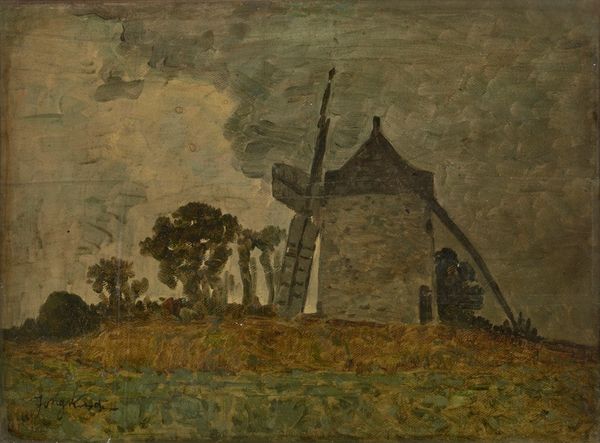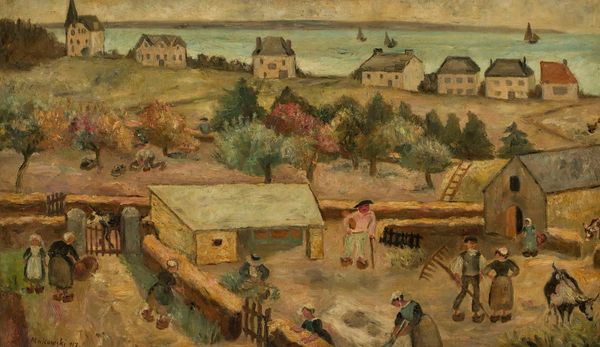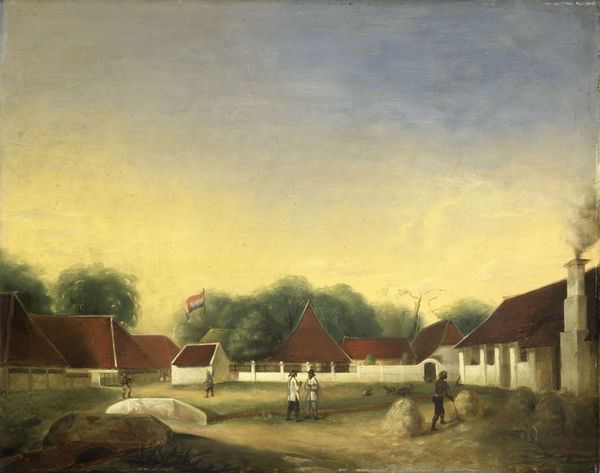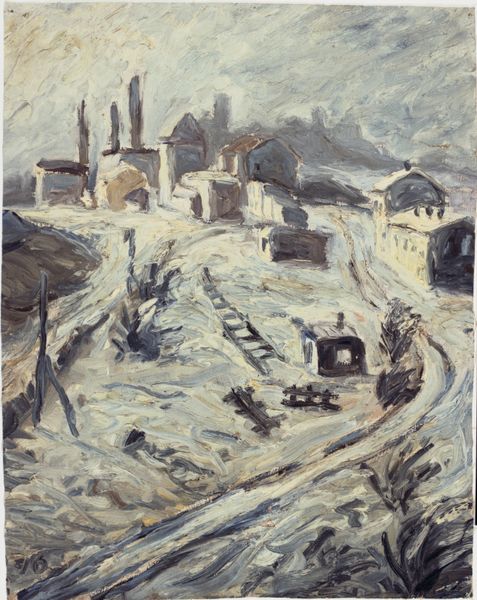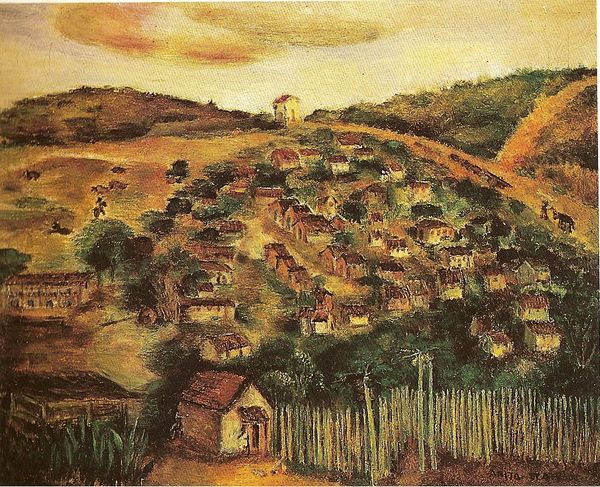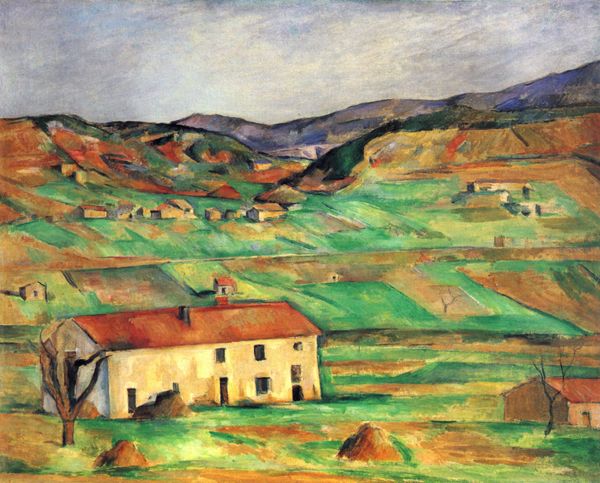
Copyright: Public domain
Curator: Welcome. Before us hangs "Montmartre Windmills," a drawing by Théophile Alexandre Steinlen, created around 1903 using charcoal, pastel, and pencil. Editor: There's a melancholic quality that strikes me first. The muted colors and soft lines give the whole scene a feeling of a memory fading. Curator: Indeed. Structurally, note how Steinlen uses the rising cityscape to guide the viewer’s eye upwards towards the focal point—the windmills perched atop the hill. This verticality is balanced by the horizontal expanse of the sky. Editor: The windmills, stark against the sky, are such potent symbols. Grain, sustenance, the rural world—and even Don Quixote tilting at them with his lance. They represent the past slowly being overtaken by the encroaching urban environment below. The artist captured Montmartre on the cusp of becoming something very different. Curator: The artist has deliberately built layers through delicate lines and shading, the light appears subtly diffused, creating atmospheric perspective. The formal components establish not a literal landscape but an evocation of space. Editor: Consider too that Montmartre was also a bohemian center, a refuge for artists. The windmills weren’t just about milling grain but had become symbols of a counter-culture, resistant to bourgeois society, spinning narratives of art. Curator: I acknowledge that cultural coding. Nonetheless, it is worthwhile to attend to how effectively Steinlen deploys charcoal and pastel, using line variation to distinguish spatial depth and subtle shading gradients that capture the nuanced, grayish palette dominating his selected range. Editor: Perhaps we see this landscape of rooftops, brick, and machinery in charcoal, a reflection of what many believe a metropolis truly is; an industrialized construct far removed from the fertile fields the windmills originally represented. Curator: The success lies with the rendering then, a structured arrangement that captures light and space via specific artistic materials. Editor: Perhaps that inherent tension - rural and urban, industrial and pastoral- can remind us of constant negotiation found in symbols within art. Curator: A final contemplation on our artist's material expression certainly makes me eager to consider it once more with attention to the composition itself. Editor: I'll remember the cultural undertones, whispering a bygone age's slow march toward urban modernity every time the windmills appear in a landscape now.
Comments
No comments
Be the first to comment and join the conversation on the ultimate creative platform.
